Be a Plotter when it comes to your writing career!
Just like some authors start a new story not knowing where it’ll lead, many self-published authors approach their writing career ‘by the seat of their pants.’ But is that the best path to success? In this installment in our series of posts related to turning your writing dream into a reality, Ginger lays out the argument that the truly successful authors approach their future in publishing with the same discipline as they plot out their stories. That is, they plan things out carefully by deciding on a genre, researching it thoroughly, and then commit to delivering books that meet reader expectations.
It’s a well-known concept – the writer as “plotter” or “pantster.” In fact, we’ve written about it a number of times on this blog!
A ‘plotter‘ plans out the path of their story, often using something like a ‘beat sheet’ or a story circle. Successful authors who literally churn out novels tend to work this way, even if it attracts criticism that their work is formulaic.
Other writers ‘write by the seat of their pants’ or are ‘pantsters.’ While this is probably not the recommended approach, there are a great many authors who start their stories not knowing where they’ll end up (Stephen King is a great example), and even the most resolute plotters often find that their characters derail things halfway through a story and they end up becoming ‘pantsters’ through no fault of their own.
While cases can be made for both approaches, it’s an accepted wisdom that ‘plotters’ tend to be slightly more successful; and it’s an approach that’s worth following with your writing career as a whole, too – not just when planning out a book.
You see, in my last blog I wrote about what it looks like to be a successful self-published author and some patterns seemed to be consistent. Successful self-published authors tend to be rigidly focused on one particular niche or category of books, and they tend to write in a series. These two approaches are foundational for getting a penname earning and selling books quickly.
But a lot of self-published authors haven’t even made that decision when they publish their first book – and time and again I’ll hear authors describe their first books as ‘not really fitting into one particular genre’ or they’ll publish them with no thought to where that fits in with the greater structure of their writing goals.
It’s entirely natural! The first and most important step in becoming a writer is simply to write something! Often you do so without much plan or structure about where that fits in the world of self-publishing, and that’s fine. It’s more important to write about what inspires you than what sells – because learning the craft of writing often helps you take those ideas and translate them into something commercially viable.
But once you’ve made the commitment to be a self-published author, and if you want to be successful at it, this is the stage at which some important decisions have to be made.
Picking a Category
So, you’ve written a book. Now, how do you get people to read it?
Before you start looking into Advertising on Amazon or buy the Mark Dawson Ads for Authors course (not that it isn’t worth the money) you should do some due diligence yourself and ask: What kind of story is it?
“Well, it’s kind of not in one particular category…” is not an answer.
You see, you have to place yourself in the position of a reader, not an author – and readers on Amazon and beyond behave in very specific ways.
They tend to have specific categories of books they read (my father devours science fiction novels, for example – whereas I’m into spy novels, action and adventure, and romance. My mother shares my passion for romance novels, but is also big on women’s literature and grand, sweeping epics about posh English ladies in foreign colonies.)
The most common way readers pick the next book on their reading list is by choosing from their favorite authors – this is why building a fan base and a mailing list remains the most powerful way to get your book out to a wider audience.
After that, readers tend to experiment with books that they might see in the Also Bought ribbon, or the Sponsored Content ribbon of their favorite books and authors – if they look like a good match.
If you look in the Also Bought ribbon and Sponsored Content ribbon for the new Lee Child book, for example, you’ll see lots of books that feature some common elements – the big sans-serif type (except for John Grisham, who has his own enormous fan base) and stylized graphics with lots of blue, red, and gold. These elements are almost like gang tattoos – they tell readers that these authors ‘get it.’ They’re part of ‘the club.’ It serves as unspoken social proof that these authors respect the reader’s chosen genre; and that’s often the way to lure somebody into clicking on them.
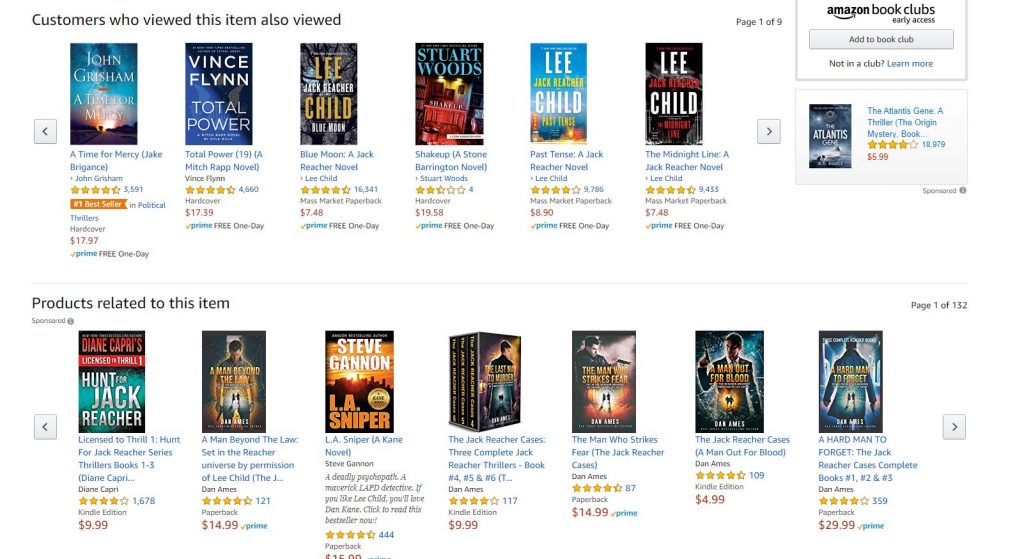
(So, don’t ever say we don’t judge a book by it’s cover.)
The third way readers find new books to read is often by going to the category of that particular book – which in The Sentinel‘s case includes Men’s Adventure Fiction and Crime Action & Adventure.
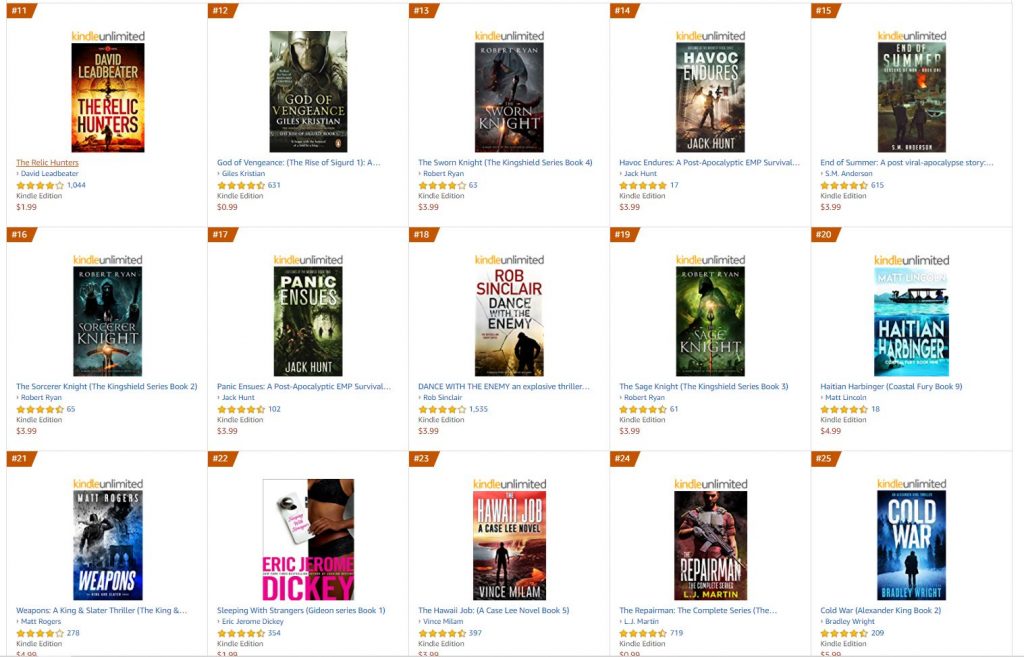
Again, you’ll see a few key ‘styles’ of cover that don’t vary that much (with the exception of Sleeping with Strangers by Eric Jerome Dickey – even though it sticks to the large, sans-serif font that comprises 75% of typefaces in the best-seller lists for this category.)
So, you can see that even with the cover alone, these authors have made a commitment to what kind of book it is they’re writing – and you can churn through the Top 100 of your favorite categories and you’ll see the same thing. If you want to be a successful self-published author, you have to commit to a category and mold your book to fit within in.
Now, this doesn’t mean you have to compromise your characters, storyline, or plot – but you might need to adjust how you’ve written the first draft of your story, or emphasis or downplay certain elements depending on the conventions of the genre.
You don’t know what those conventions are? It’s probably not a genre you should be writing in, then – or else you should commit to learning what those conventions are before you toss your book out into the wild.
After churning out their first book, a lot of first-time or new authors are very protective of the product they’ve created – but you’ve got to be willing to follow Stephen King’s advice and ‘kill your darlings’ because readers are unlikely to embrace you unless you can demonstrate that you know and respect their favorite categories.
Amazon recently massively expanded the number of book categories that they list, and the further you drill down into them, the less variety you’ll see in the styles and conventions of a cover. You might see a half-dozen different styles of covers in the Top 100 Romance category, but when you drill down to Science Fiction Romance, you’ll see pretty much 50% of the Top 100 books featuring a ubiquitous gallery of purple-hued hunks and big, stylized lettering.
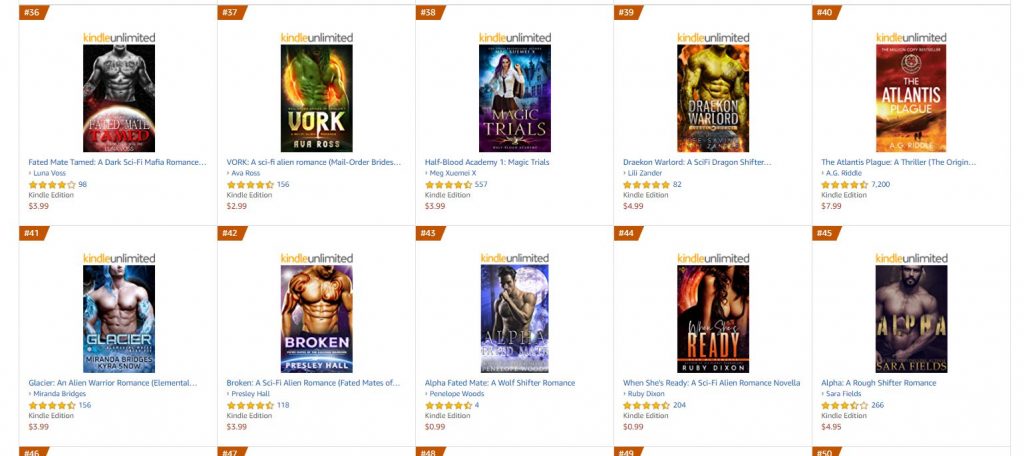
These covers are an unspoken promise to a reader that the author knows their genre, is respectful of the ‘beats’ of a sci-fi romance novel, and is going to scratch the reader’s itch without sneaking something unexpected into the recipe.
Of course, the secret to being prodigiously successful is to stand out from the crowd; but before you focus on what makes your category book different, you have to be familiar with what needs to be the same.
In the immortal words of Pablo Picasso:
Learn the rules like a pro, so you can break them like an artist.
Planning Your Series
Even if you’ve only written one book so far, you should be planning your book series. With the sole exception of Harper Lee, nobody ever became a successful author by writing a single book. Every successful author – self-published or not – tends to write books in a series; because if you can hook a reader into one of those books, you’re likely to lure them into more of them.
Although it’s only three books deep so far, Kendra Elliot’s Columbia River Series is a great example. Her covers fit the formula of her sub-category so well, they’re practically a style guide for them. More than that, each cover is instantly recognizable as one of her books, even though it would be difficult to describe in words how they stand apart from those of Melinda Leigh.
Her books form a series because they feature murder mysteries set in the same fictional Washington town – Columbia River. While the books focus on different characters, there are familiar faces in each one; which make for a great experience for readers who churn through the whole series.
As a reader, finding a new series you can get immersed into is incredibly rewarding – and as an author, it’s both lucrative (because readers will keep buying your books) and also incredibly rewarding to write them.
I’m eleven books into my own series at the moment, and the best part about having a reoccuring cast of characters is that they practically write their own books! When you get the chance to flesh out characters and have them come into conflict with other people in your story, the opportunity to tell ‘their’ tale becomes addictive. I might only be writing Book 12 in my current series, but I’ve already got the next nine books planned!
So as soon as you start focusing in on what your chosen category will be, you should start thinking about what your book series looks like; because if you want to be a successful self-published author, that’s what you’ll need.
Do your research
Once you’ve chosen a category and planned out a series, it’s time to do the hard work. Research.
I’ve always believed that anybody can become a successful self-published author if they take the time to learn the craft of writing, and follow the formula of successful self-publishing. The only ‘talent’ you have to have is a commitment to actually do it, and the sheer bloody-mindedness to keep doing it, even when it appears like a thankless task.
The rest you can learn – but you have to actually make the effort to. Once you’ve chosen your genre, go there and read the five best-selling books by the five best-selling authors and start to log which beats and tropes and conventions occur throughout all of them.
This isn’t a step you can afford to skip – and it’s not one that readers will forgive you for, either. Take it from me – I’d know! I started publishing romance novels in 2015 and learned the hard way when the first six flopped.
Six books! I committed to writing six books before I shut up and started reading six from my chosen genre!
As soon as I did, though, you could have heard the slap of my palm against my forehead as far away as Florida. I had made so many mistakes; and the irony was how forgiving my readers had been about them, rather than how harsh.
I’d written in third person, whereas every book in my sub-category was written in first-person with alternating hers-and-his POVs.
I included cheating in my early books – and even if the heroine’s husband or boyfriend is a swine, that’s never condoned in my chosen subcategory.
I won’t even mention how off-brand my covers were!
I made a bunch of stupid mistakes because I’d arrogantly assumed I knew what I was doing; and I became an infinitely better writer as a result.
And the funny thing? A lot of the ‘compromises’ I had to make ended up making my writing better. These days I write in first person with alternating points-of-view not because it’s a convention, but because it’s an incredibly powerful way to tell a story.
The third element that makes a successful self-published author is one that can’t be taught – that insane, undeniable, irresistible urge to write.
Likewise, I identified the non-negotiable aspects of a successful hero (he might be a womanizer, for example – but only until he meets the heroine) and adopted them; and found they made my heroes better.
As a male author writing in romance, I’ll hands-down say that writing in this genre has made me not just a better writer, but a better man. While there is plenty of criticism of the ‘fantasy’ of a romance hero (like stalker Christian Grey, for example) there are also elements like loyalty, self-reliance, and protectiveness that are traits real men should aspire to.
(Seriously, pick-up artists would learn a lot from a good romance book.)
You don’t have to compromise – you just have to have a vision!
In future blogs, I’ll discuss how you can take what you’ve written now and revise it into something that will be commercially successful later.
Just know this, though – you don’t have to compromise.
You don’t have to compromise on your characters, the events that occur in your story, or even the theme of your book to be successful. In fact, you shouldn’t!
If you can research your chosen genre and find a way to tell your story through the formula and conventions of that category, you’ll have the best of both worlds – and you’ll be able to keep telling the stories you love while also getting paid for it!
It’s not a dream – it’s a realistic and achievable goal. Keep reading these blogs and I’ll show you how.


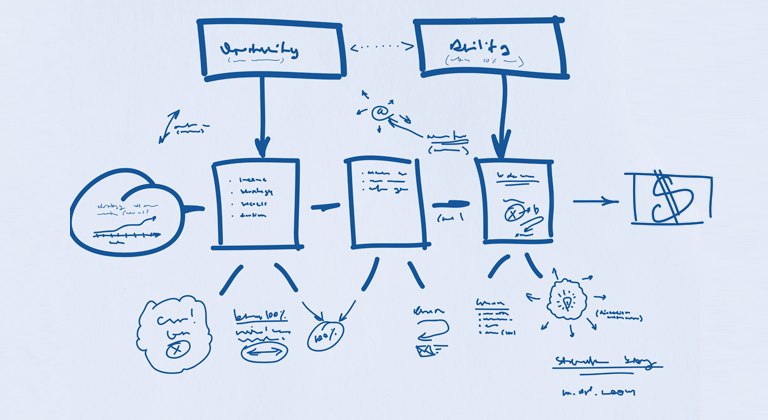





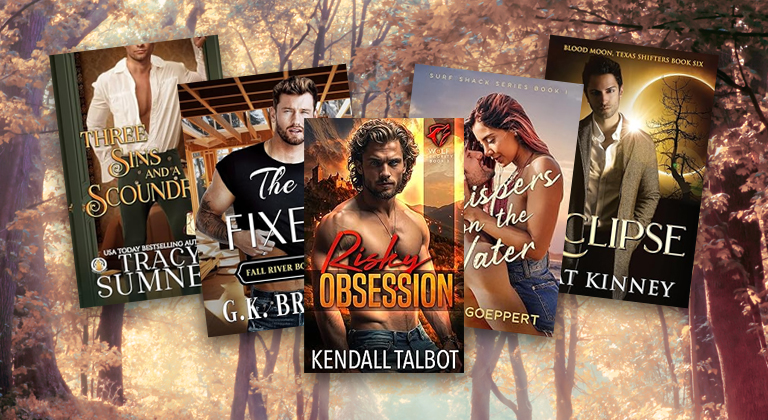

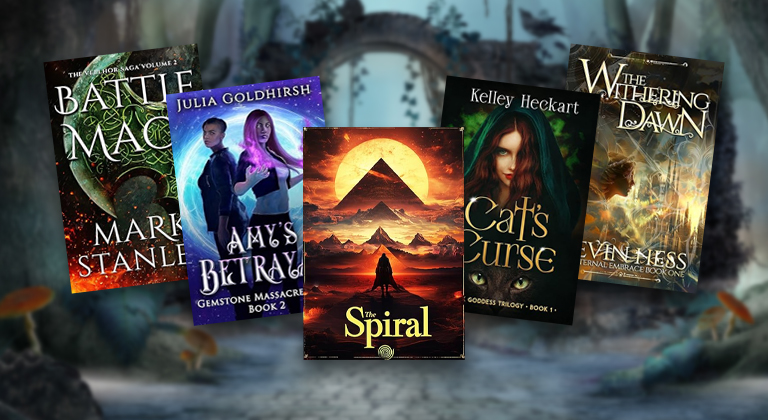

1 Comments